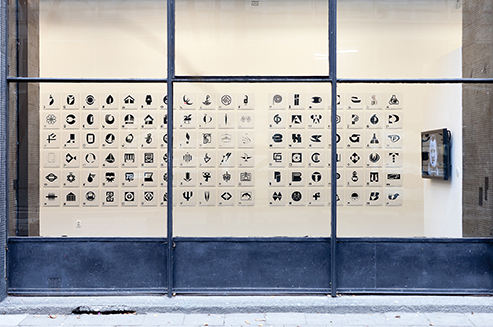The first part of the exhibition is a reconstruction of the legendary First Polish Exhibition of Graphic Symbols from 1969. Hosted by the Association of Polish Artists and Designers in Warsaw, it displayed 335 designs selected by a Qualifying Committee from a number of mailed-in applications. It included the logo designs of Pekao, Moda Polska, CPN, Unitra, Dom Handlowy “Telimena” and many other iconic images created by designers such as Ryszard Bojar, Roman Duszek, Jan Hollender, Emilia Nożko-Paprocka, Karol Śliwka or Leon Urbański.
The second part of the exhibition includes 335 recent designs created between 2000 and 2015, selected by the exhibition’s Consultants’ Council and Commissioners (Ryszard Bojar, Marta Gawin, Viktoriya Grabowska, Michał Łojewski, Katarzyna Roj, Kuba Sowiński, Marcina Wolny, Patryk Hardziej and Rene Wawrzkiewicz) from among 3000 submissions.
Since the late 1960s Poland has not produced an exhibition or publication that would attempt to show the history of its graphic symbols and visual identities in its entirety. A sign is one of the basic elements of visual communication. Abstract symbols, artistic metaphors and graphic shortcuts are like syllables and letters of a graphic language system in which the history of a nation or a society is reflected.
The Second Polish Exhibition of Graphic Symbols was first presented at the Design Centre in Gdynia. The Museum of Modern Art in Warsaw will host it from November 13 to January 10, 2016. In 2016 the exhibition will be taken to the BWA Dizajn gallery in Wrocław, Bunkier Sztuki in Cracow, the BWA Tarnów gallery and other galleries, museums and cultural institutions in Poland. Openings will be accompanied by lectures, workshops and various meetings.
Source: Museum of Modern Art in Warsaw, FB
Photo © Bartosz Stawiarski


